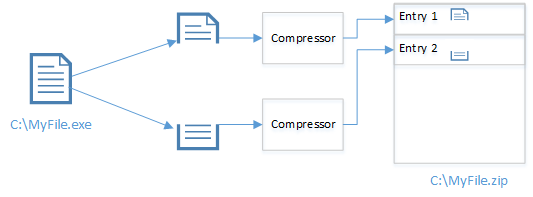Reducing the size of self-contained .NET Core applications
Just for note keeping, I've written down some methods of reducing the size of a .NET Core application. I thought others could use it as well, so here you go. Original Size First off, let's see how much disk space a self-contained 'hello world' application takes up. > dotnet new console > dotnet publish -r win-x86 -c release Size: 53.9 MB - yuck! Trimming Microsoft has built a tool that finds unused assemblies and removes them from the distribution package. This is much needed since the 'netcoreapp2.0' profile is basically .NET Framework all over again, and it contains a truckload of assemblies our little 'hello world' application don't use. > dotnet new console > dotnet add package Microsoft.Packaging.Tools.Trimming -v 1.1.0-preview1-25818-01 > dotnet publish -r win-x86 -c release /p:TrimUnusedDependencies=true Size: 15.8 MB Much better! Although, we have only removed unused assemblies - what about unused...


Comments
Have a look at this article:
http://www.flipcode.com/archives/Network_Game_Programming-Issue_07_I_bent_my_Wookie.shtml
The issue it probably not related to the use of floating point numbers, but rather the timing of the impulses. Farseer Physics Engine is deterministic, this means that given the same input in two worlds that are identical, they will behave the same way.
I’m working on game development magazine – Game Coder Mag Physics – aimed mostly at professionals and those who study to work in the field of game development in the future.
I’m looking for authors for the next issue devoted to collision detection. But if You would like to chose other topic there won't be a problem. Please let me know if you'd be interested in writing an article for the magazine by mail adam.robakiewicz@software.com.pl
Best
Adam Aleksander Robakiewicz
Post a Comment